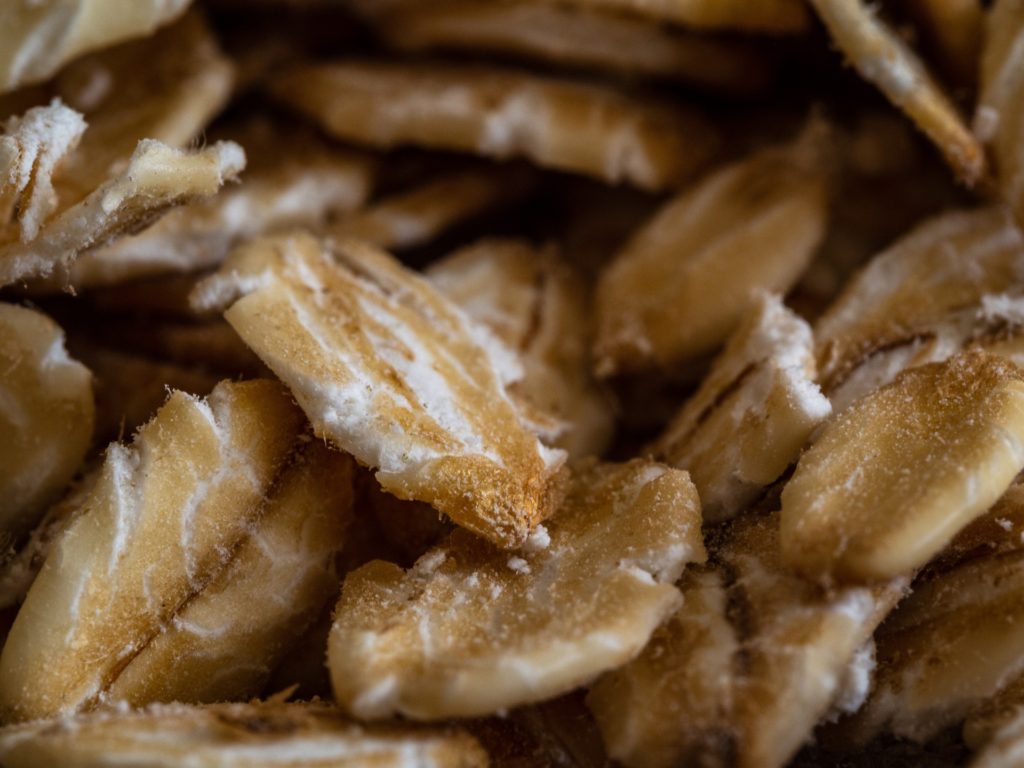
Oily foods can naturally become rancid if left in the air for an extended period of time, resulting in discoloration, unpleasant flavors, and aromas. Rancidity occurs due to the oxidation of unsaturated molecules found in natural fats, oils, essential oils, and waxes. This process of deterioration can be slowed down or prevented with the use of antioxidants. Natural antioxidants such as vitamins, polyphenols, carotenoids, and flavonoids are present in citrus fruits, green vegetables, and nuts. However, processed foods may contain synthetic antioxidants like Butylated hydroxytoluene (BHT).
Ingredients that are prone to oxidation are frequently used in processed foods. And this increases the risk of spoiling and reducing of shelf life. To combat this, food manufacturers often add synthetic antioxidants to their products to slow down or prevent oxidation and increase the shelf life of the food. However, synthetic antioxidants are avoided by many people in favor of natural sources of antioxidants. This is due largely to concerns regarding their safety and health implications.
In this blog post, we will discuss what butylated hydroxytoluene (BHT) is, its role in food, and its safety. We’ll also give you some pointers on how to reduce your BHT exposure in your diet.
WHAT IS BUTYLATED HYDROXYTOLUENE (BHT)?
Butylated hydroxytoluene (BHT) is a synthetic antioxidant commonly used to extend the shelf life of foods. BHT is a chemical compound belonging to the phenol family, which includes substances with an aromatic ring and an attached hydroxyl (-OH) group. BHT is highly stable and efficient in preventing oxidation in a variety of applications due to its two phenol groups and tert-butyl group.
A British scientist synthesized BHT for the first time in the late 1940s. It was initially employed as a fuel additive to stop gum and other deposits from forming in gasoline. Later, its antioxidant qualities were identified, and it was discovered to be successful in preventing rancidity in fats and oils as well. Since then, BHT has gained popularity as a food additive, and is also utilized in a variety of other items, including cosmetics and medications.
BHT’s minimum standards are regulated by multiple agencies. In the United States, the Food and Drug Administration has classified BHT as generally recognized as safe (GRAS). This indicates that the US government considers it safe for use in food at appropriate levels. For instance, the amount of BHT added to breakfast cereals should not exceed 50 ppm.
You might also like: Titanium Dioxide From Skittles: It Is Safe?
While BHT in dietary levels is usually deemed harmless, there have been concerns regarding its long-term consequences on health. And unlike the United States, countries including New Zealand, Canada, Japan, Canada, Australia, and the members of the European Union have banned the antioxidant in food for being a human carcinogen. And for this reason there has been an increase in interest in knowing which foods contain BHT.
WHY AVOID BHT?
Some people prefer to avoid BHT totally in their food and other items for a variety of reasons. Its possible negative impacts on health are the main reasons for this. Sure, BHT has been approved for use in food by regulatory bodies like the U.S. Food and Drug Administration (FDA). But certain researches have suggested that BHT in large levels could be harmful to one’s health.
For instance, some research on animals has revealed that BHT may have cancer-causing properties and may be connected to liver and kidney damage. When given consistently to dogs for four weeks at a dose of 1.4 to 4.7 g/kg, BHA causes mild diarrhea. It also results in long-lasting allergic reactions, abnormalities, and metabolic system damage.
In 1972, a study was conducted by scientists from Loyola University found that when pregnant mice were fed a diet containing half a percent of BHT, their offspring exhibited chemical changes in the brain and showed abnormal behavior patterns.
You might also like: How Nutrient Loss Occurs In Fruits and Vegetables
Additionally, due to BHT’s synthetic makeup, some persons may decide to avoid it. Many people prefer to use natural foods and might be worried about the potential long-term implications of using artificial substances like BHT. It is important to note the long-term effects of BHT consumption are a topic of ongoing research and debate. Furthermore, BHT is utilized in food and other products in comparatively small concentrations, and is typically regarded as safe for intake by most people.
But if you still wish to steer clear from BHT-containing food products, here are some food items to avoid:
FOODS THAT COMMONLY CONTAIN BHT
Breakfast cereals
BHT is commonly added to breakfast cereals to extend their shelf life and prevent the fats in the cereal from becoming rancid, especially if they contain nuts, seeds, or other similar ingredients that are rich in unsaturated fats. These fats need to be treated with an antioxidant such as BHT or BHA to maintain their quality and freshness over time. Moreover, since breakfast cereals are often packaged in large quantities and may spend a long time on store shelves, the use of antioxidants is necessary to ensure their safety and acceptability. The FDA has established the maximum allowable level of BHT in dry breakfast cereals at 50 ppm.
Canned food
BHT is thought to have originally been employed in canned foods in the 1940s, when it was initially utilized as a food preservative. In the 1950s and 1960s, BHT and other synthetic antioxidants were used increasingly often as food producers worked to extend the stability and shelf life of their products.
When food is canned, it is sealed in an airtight container. This prevents bacteria and other microbes from growing and spoiling the food. However, the absence of oxygen in the can can also lead to food oxidation. And what happens next is undesired changes in the food’s flavor, color, and texture. Adding BHT as an antioxidant can prevent oxidation and the occurrence of these rancidity-related changes in the food.
Chewing gum
Oils are a key ingredient in chewing gum. Common oils in chewing gums include peppermint, spearmint, and cinnamon oils. They give the gum base flavor, texture, and moisture. Oils can help keep the gum soft and pliable in addition to adding flavor and texture, allowing it to be chewed for extended lengths of time. However, depending on the chewing gum’s flavor and brand, the precise types and quantities of oils utilized may differ.
But as we already know, oil is prone to rancidity. BHT prevents this by binding with oxygen molecules and stabilizing the oils and flavorings in the gum.
Potato chips
Potato chips, as well as other fried or roasted treats manufactured from oils and fats, are prone to oxidation. Antioxidants such as BHT is frequently used by food manufacturers to stabilize the oils and fats in potato chips. This is how most potato chips prevent rancidity and maintain their freshness and flavor.
Instant noodles
Additives are commonly used in instant noodles, particularly in Asia where noodles are popular. These noodles are precooked and dried, and typically come with a seasoning packet. The noodles are partially cooked and then deep-fried in oil until they become crispy and dry. Due to the risk of oxidation during long-term storage, instant noodles often contain antioxidants to preserve their quality. In addition to BHT, other antioxidants like butylated hydroxyanisole (BHA), tertiary butylhydroquinone (TBHQ), and vitamin E may also be added to instant noodles.
Baked products
BHT may be used as a preservative in some baked goods to prevent oxidation and improve shelf life. While natural antioxidants are available, the low cost and high stability of synthetic antioxidants makes it a better option in most cases.
You might also like: 5 Easy Tips For Longer Nuts Shelf life
BHT is more likely to be found in baked goods that are more prone to oxidation, such as those containing fats or oils. Cakes, biscuits, crackers, and pastries are examples of such items. BHT can also be used in baked goods packaging to avoid oxidation during storage and transportation. Some natural or organic baked goods may not include BHT or other synthetic preservatives because they use natural preservation methods or alternative preservatives. However, not all baked goods include BHT, and some may have different preservatives or none at all.
Vegetable oils
Vegetable oils that are rich in polyunsaturated fatty acids are highly susceptible to oxidation due to their chemical structure. These fatty acids possess more than one double bond, making them more prone to oxidation than saturated or monounsaturated fatty acids. This tendency towards oxidation is the reason behind the production of unpleasant flavors and aromas in these oils.
Some vegetable oils may contain BHT as a preservative to prevent oxidation, especially during during storage and shipping. BHT works by preventing or slowing the oxidation of the oil, hence extending its shelf life. Soybean oil, corn oil, and canola oil are examples of polyunsaturated fatty acid-rich vegetable oils that are more likely to contain BHT. However, depending on the brand and product, the particular types and amounts of preservatives employed in vegetable oils can vary.
Processed meats
BHT may be used as a preservative in processed meats to avoid oxidative rancidity, which can occur due to the high fat content of these products. It inhibits fat breakdown in meat and extends the product’s shelf life. BHT is more likely to be found in processed foods that are high in fat, such as sausages, bacon, and hot dogs. However, depending on the brand and product, the particular types and amounts of preservatives used in processed meats can vary.
AVOIDING BHT IN YOUR DIET
While totally eliminating BHT from your diet may be difficult, there are things you can do to reduce your exposure. One alternative is to select products labeled “BHT-free” or “preservative-free.” Another alternative is to consume fresh, whole foods rather than processed or packaged meals, which are more likely to include additives such as BHT. Reading ingredient labels and conducting research on the items you eat can also help you make informed diet choices and reduce your exposure to potentially dangerous substances.
While BHT is a popular preservative found in many processed foods, there are alternatives. Rosemary extract, vitamin E, and citric acid are examples of natural preservatives. These options may be just as effective at preserving food as BHT without the possible health hazards. Furthermore, some food producers are starting to utilize more natural preservatives in their products, so it’s worth reading labels and doing research to locate these alternatives.
References:
R. Winter (2009). A Consumer’s Dictionary of Food Additives, 7th Edition: Descriptions in Plain English of More Than 12,000 Ingredients Both Harmful and Desirable Found in Foods. Harmony
W. Zhou, Y. H. Hui (2014.) Bakery Products Science and Technology (2nd Edition). John Wiley & Sons, Ltd
T. Shibamoto, L. Bjeldanes (2009). Introduction to Food Toxicology (2nd edition). Academic Press



Pingback:is this toxin lurking in your personal care products and your holiday meal? – Pure Haven